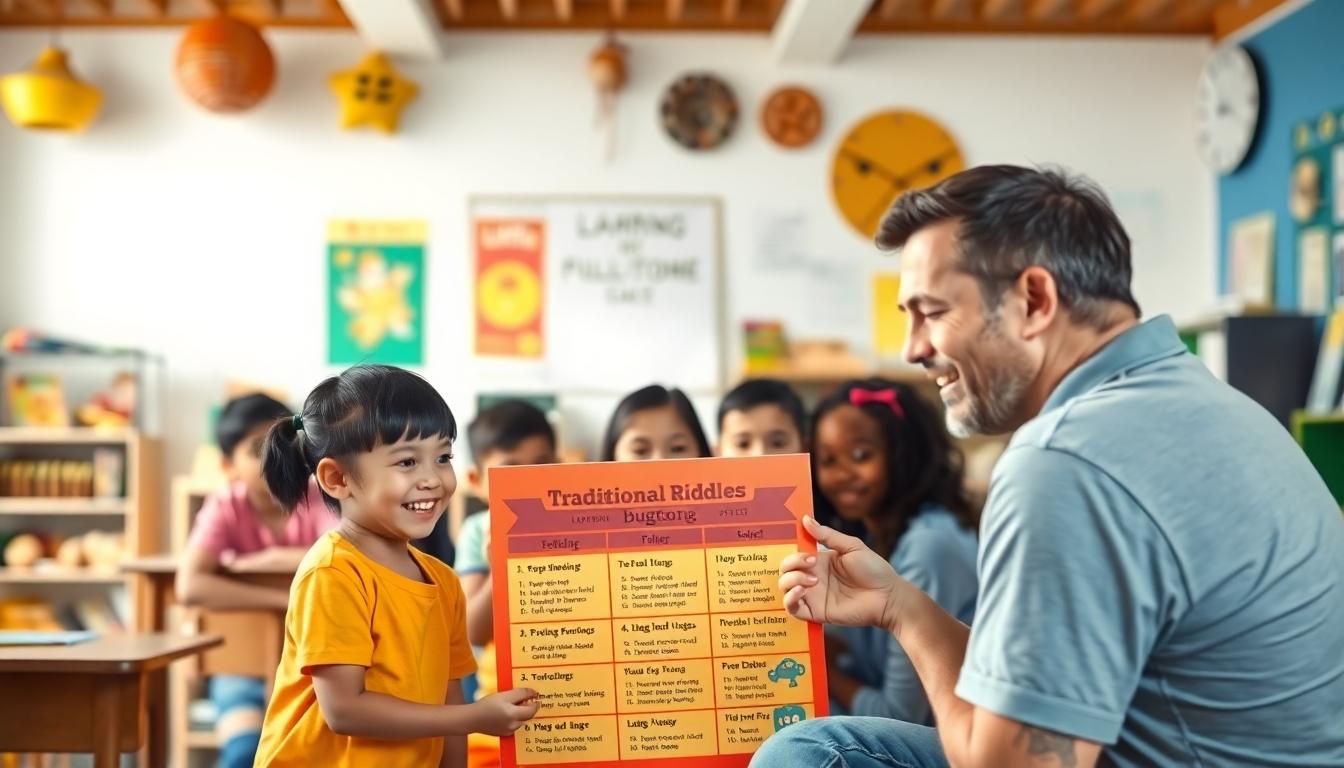Ready to challenge your mind with a taste of Filipino culture? We’ve gathered the most intriguing Filipino riddles (or “bugtong”) that have been passed down through generations, offering both entertainment and a glimpse into Philippine heritage.
These clever wordplays aren’t just fun brain teasers—they’re windows into Filipino values, daily life, and traditions. From riddles about nature to those describing everyday objects, each bugtong comes with its answer, so you’ll never be left guessing. Whether you’re connecting with your Filipino roots or simply enjoy puzzles from around the industry, you’ll find these riddles both challenging and rewarding.
10 Classic Filipino Riddles That Will Test Your Wit
- Isáng bayabas, punô ng karayom. (A guava full of needles.)
Answer: Nangká (Jackfruit)
This clever riddle compares jackfruit to a guava filled with needles because of its spiky exterior. Many Filipinos grow up enjoying the sweet yellow flesh of jackfruit while carefully handling its intimidating surface.
- Dalawáng batong itím, malayo ang nararating. (Two black stones that travel far.)
Answer: Matá (Eyes)
Our eyes, compared to black stones in this riddle, allow us to “travel” great distances through sight. Filipino riddles often use simple natural elements to describe body parts in creative ways.
- Isáng princesa, nakaupo sa tasa. (A princess sitting in a cup.)
Answer: Yema (Egg yolk)
Egg yolks sitting in their shells resemble tiny princesses on thrones. This riddle showcases how Filipino culture elevates everyday kitchen ingredients to royal status through playful imagination.
- Bahay ng pagong, lumalakad ngunit walang paa. (A turtle’s house that walks without feet.)
Answer: Sasakyan (Vehicle)
Vehicles are compared to moving turtle shells in this timeless riddle. The analogy perfectly captures how cars protect passengers while moving them from place to place.
- Matapang ako sa dalawa, duwag naman sa isa. (I’m brave against two, but a coward against one.)
Answer: Tulay (Bridge)
Bridges stand strong against two riverbanks but “fear” a single flowing river beneath them. This riddle cleverly personifies infrastructure in a way that makes you reconsider everyday structures.
- Áso ko sa Maynila, tumahol dito, narinig ko. (My dog in Manila, barked there, I heard it here.)
Answer: Kulog (Thunder)
Thunder travels great distances, just like the sound of a dog barking far away. Filipinos often use riddles like this to explain natural phenomena through relatable comparisons.
- Balong malalim, puno ng patalim. (A deep well, full of blades.)
Answer: Bibig (Mouth)
The mouth with its teeth is depicted as a well filled with sharp objects. This traditional riddle serves as a reminder of the power of words and speech in Filipino culture.
- Isáng butil ng palay, sikip ang buong bahay. (A grain of rice that fills the entire house.)
Answer: Ilaw (Light)
Light from a small source can fill an entire home, similar to how a tiny grain of rice seems to expand. This riddle reflects Filipino resourcefulness and finding abundance in small things.
- Kung hawakan mo ako, iiwan kita. Kung pakawalan mo ako, sasama ako sa iyo. (If you hold me, I’ll leave you. If you let me go, I’ll stay with you.)
Answer: Hininga (Breath)
Breath escapes when we try to hold it but remains when we breathe normally. This philosophical riddle demonstrates how Filipino wordplay often contains deeper life lessons.
- Maliit pa si Nene, marunong nang lumundag. (Little Nene already knows how to jump.)
Answer: Butil ng Mais sa Kawali (Popcorn)
Popcorn kernels jumping in hot oil are personified as a small child named Nene who’s learning to jump. Traditional Filipino cooking experiences transform into playful brain teasers that connect food preparation with everyday observations.
The Cultural Significance of “Bugtong” in Filipino Tradition

“Bugtong” holds a treasured place in Filipino cultural heritage as more than just simple riddles. These clever wordplays, also known as “palaisipan,” serve as intellectual challenges that test one’s wit while reflecting the Filipino community’s playful approach to language. Like “salawikain” (proverbs), bugtong employs rich symbolism and creative descriptions of everyday objects, showcasing the inherent humor and linguistic creativity embedded in Filipino folklore.
How Riddles Connect Generations in Filipino Families
Filipino riddles function as powerful connectors between different generations, creating a shared cultural experience that strengthens family bonds. During leisurely afternoons or relaxed weekends, family members gather to exchange these brain teasers, turning simple entertainment into meaningful cultural preservation. The practice of sharing bugtong creates natural opportunities for grandparents and parents to pass down traditional knowledge to younger family members. This intergenerational exchange not only preserves linguistic traditions but also reinforces cultural values through informal, enjoyable interactions that create lasting memories across family lines.
The Educational Value of Traditional Riddles
Traditional bugtong offer important educational benefits beyond mere entertainment. These riddles naturally develop critical thinking skills by challenging solvers to decode complex metaphors and clever wordplay that describe common objects in unexpected ways. Children engaged with these riddles develop stronger linguistic abilities while simultaneously absorbing cultural knowledge embedded within the questions and answers. The process of solving bugtong encourages creative problem-solving approaches and mental flexibility—valuable cognitive skills that extend beyond the riddle-solving context. Also, regular engagement with these traditional word puzzles helps preserve authentic Filipino language expressions that might otherwise fade from daily use, making them educational tools for both linguistic and cultural learning.
Animal-Themed Filipino Riddles With Clever Answers

Animals feature prominently in Filipino riddles, showcasing the deep connection between Filipino culture and the natural industry. These animal-themed bugtong challenge your wit while offering insights into how Filipinos observe and interact with creatures in their environment.
Land Animal Riddles That Challenge Your Thinking
Land animals inspire some of the most creative Filipino riddles that test your problem-solving abilities. One classic example asks, “Here comes Kaka, walking with an open leg” – the answer is simply “Frog,” reflecting how Filipinos observe the distinctive hopping movement of frogs with their splayed legs. Another popular riddle states, “Tag-ulan o tag-araw, hanggang tuhod ang salawal” (Whether rainy or sunny season, the pants are knee-length), which refers to “Manok” or Chicken, cleverly describing how a chicken’s feathers appear to stop at its knees regardless of the weather. These riddles transform ordinary observations about animals into brain-teasers that require lateral thinking to solve.
Water Creature Riddles With Surprising Answers
Water creatures also swim through the industry of Filipino riddles, often highlighting their unique adaptations and behaviors. A particularly clever example states, “Isda ko sa tabang, pag nasa lupa ay gumagapang” (My fish in freshwater, when on land it crawls) – the answer is “Hito” or Catfish. This riddle captures the catfish’s ability to survive briefly out of water and move across land, a distinctive trait that fascinated Filipino observers. The dual-habitat nature of certain aquatic creatures makes them perfect subjects for riddles that surprise and delight with unexpected connections between water and land environments.
Household Object Riddles From Filipino Culture

Filipino bugtong (riddles) about household objects showcase the creative way Filipinos perceive their surroundings, turning ordinary items into clever linguistic puzzles. These riddles serve as both entertainment and a reflection of daily domestic life in Filipino culture.
- “Ang bahay ni Pedrito, walang pinto puro kwarto” (Answer: Kawayan/bamboo)
This riddle cleverly depicts bamboo’s naturally segmented structure, comparing it to a house with many rooms but no doors. Bamboo has been a fundamental building material in traditional Filipino homes for centuries.
- “Hindi hari, hindi pari, ang suot ay sari-sari” (Answer: Sampayan/clothesline)
The clothesline riddle uses personification to describe how it “wears” various clothing items without being royalty or clergy. It captures the colorful visual of diverse garments hanging in Filipino households.
- “Sundalong negro, nakatayo sa kanto” (Answer: Poste/lamp post)
Standing tall like a sentinel at the corner, this riddle compares the lamp post to a dark-colored soldier. Lamp posts remain constant fixtures in Filipino neighborhoods, providing light and serving as community landmarks.
Kitchen Item Riddles That Spark Curiosity
Kitchen-related riddles reflect the central importance of food preparation in Filipino culture, where culinary traditions are passed down through generations.
- “Bisitang hindi inaasahan, nauuna sa hapag-kainan” (Answer: Langaw/fly)
Flies are humorously characterized as uninvited guests who arrive first at the dining table. This riddle captures a common household nuisance with wit rather than annoyance.
- “Umupo si itim, sinulot ni pula, labas si puti, bubuga-buga” (Answer: Sinaing/rice pot)
The cooking process comes alive in this riddle depicting charcoal (black) being lit by flame (red), causing steam (white) to rise. Rice cooking forms the cornerstone of Filipino meals, making this riddle particularly culturally important.
- “Isda ko sa tabang, pag nasa lupa ay gumagapang” (Answer: Hito/catfish)
Catfish become the subject of this kitchen riddle, noting their unusual ability to survive briefly on land. Fresh catfish remains a popular ingredient in many traditional Filipino dishes.
Everyday Tool Riddles With Unexpected Answers
Tools used in daily Filipino life inspire riddles that highlight both their form and function through creative wordplay.
- “Isang hukbong sundalo, dikit-dikit ang mga ulo” (Answer: Walis/broom)
The broom’s clustered bristles are imaginatively compared to a group of soldiers standing closely together. Brooms made from palm ribs or tiger grass remain essential household cleaning tools in the Philippines.
- “Ang utusan kong si Pedrito, palaging mainit ang ulo” (Answer: Plantsa/flat iron)
This riddle personifies the flat iron as a servant named Pedrito whose “head is always hot.” Traditional irons heated on stoves were once common in Filipino households before electric versions became widespread.
- “Dala mo siya, dala ka niya” (Answer: Bakya/wooden shoes)
The wooden shoes riddle highlights the mutual relationship between footwear and wearer—you carry them, yet they also carry you. Bakya were traditional Filipino wooden clogs worn before modern footwear became common.
Nature-Inspired Filipino Riddles That Amaze Children

Filipino riddles, known locally as “bugtong,” often draw inspiration from the natural industry, creating metaphors that captivate children’s imagination. These nature-based riddles showcase the Filipino people’s deep connection to their environment while developing critical thinking skills in young minds.
Plant and Fruit Riddles With Creative Answers
Plants and fruits feature prominently in Filipino riddles, blending biological characteristics with clever wordplay. Consider this popular riddle: “Ang katawan ay bala, ang bituka ay paminta” (The body is a bullet, the insides are peppercorns). The answer is papaya, referencing its bullet-like oblong shape and small black seeds that resemble peppercorns. Another intriguing example is “Naligo si Elmo, Hindi nabasa ang ulo” (Elmo bathed without wetting his head), which describes taro leaves (Dahon ng Gabi) with their water-repellent surface.
We’ve found that children particularly enjoy the Makahiya plant riddle: “Kung bayaan ay nabubuhay, kung himasin ay namamatay” (If left alone, it lives; if touched, it dies). This riddle perfectly captures the sensitive nature of the Makahiya, which folds its leaves when disturbed, appearing to “die” at human touch.
Weather and Natural Phenomenon Riddles
Weather elements often take on personified qualities in Filipino riddles, making abstract concepts accessible to children. “Baston ni Adan, Hindi mabilang-bilang” (Adam’s uncountable staff) refers to rain (Ulan), emphasizing the countless droplets that fall from the sky. This riddle helps children visualize rain in a creative way while building vocabulary.
Natural phenomena provide rich material for brain teasers that stimulate young minds. “Con aga naga lapta, pero con hapon naga tipon” (In the morning it spreads; by evening, it gathers) traditionally describes tuba (palm wine), though similar imagery appears in riddles about clouds and other weather patterns.
The riddle “Dala mo siya, dala ka niya” (You carry it, it carries you) cleverly describes shoes (Bakia), highlighting the symbiotic relationship between people and their footwear. Similarly, “Kinain ang isa, itinapon ang dalawa” (Eat one, discard the other two) refers to clams (Tulya), teaching children about food practices through wordplay.
Modern Filipino Riddles With a Contemporary Twist

Filipino riddles have evolved beyond their traditional forms to embrace contemporary themes while maintaining their metaphorical essence. Modern bugtong cleverly incorporate technology, urban living, and present-day experiences that resonate with younger generations.
Nature-Inspired Contemporary Riddles
“Kapirasong lupa, napapaligiran ng sapa.” (A piece of land surrounded by streams)
Answer: Pulo (Island)
This classic riddle maintains its environmental connection but can be modernized by replacing “sapa” with “highway” to reflect urban islands surrounded by roads. Modern versions might reference traffic islands or urban green spaces, making the traditional format relevant to city dwellers.
Tech-Themed Adaptations
“Bisitang hindi inaasahan, nauuna sa hapag kainan.” (An unexpected visitor, arriving first at the dining table)
Answer: Langaw (Fly)
Today’s version might substitute “hapag kainan” with “food delivery” or “online order,” reflecting how modern dining has changed. Contemporary adaptations often reference smartphones, social media, or digital experiences while preserving the riddle’s playful misdirection.
Household Objects Reimagined
“Hindi hari, hindi pari, ang suot ay sari-sari.” (Neither king nor priest, yet wears various things)
Answer: Sampayan (Clothesline)
Modern versions transform this clothing-related riddle by substituting “clothes” with “USB ports” or “charging cables,” creating tech-savvy variations. We’ve noticed how these updates maintain the original structure but incorporate objects familiar to digital natives.
Urban Life Puzzles
Traditional agricultural references now appear alongside riddles about apartment living, public transportation, and office environments. Popular themes include riddles about WiFi signals, social media notifications, and food delivery services—all forming part of contemporary Filipino experiences.
By blending traditional formats with modern references, these updated riddles serve as bridges between generations, allowing Filipino cultural practices to remain relevant in a rapidly changing industry. They demonstrate how bugtong continue to evolve while preserving their fundamental role as witty challenges that test perception and creativity.
How to Use Filipino Riddles for Language Learning

Filipino riddles, known locally as “bugtong,” offer more than just entertainment—they’re powerful tools for language acquisition. These clever wordplays provide unique opportunities to develop linguistic skills while exploring Filipino culture. Let’s explore practical ways to incorporate these riddles into language learning strategies.
Cultural Immersion Through Wordplay
Filipino riddles serve as windows into the cultural industry of the Philippines. By captivating with bugtong, learners absorb authentic cultural elements embedded within each puzzle. Every riddle reflects Filipino values, daily life observations, and traditional perspectives, making language learning contextually rich. Understanding these cultural references helps learners grasp linguistic nuances that might otherwise be difficult to comprehend through conventional study methods.
Vocabulary Expansion and Retention
Bugtong naturally introduce new words through metaphorical language. The descriptive nature of riddles encourages learners to connect unfamiliar terms with concrete objects or concepts, creating memorable associations. For instance, when learning that “atis” (a tropical fruit) is the answer to a riddle about something sweet and juicy, students retain both the word and its characteristics. These metaphors and similes found in riddles provide perfect vehicles for introducing grammatical structures in a memorable context.
Interactive Learning Sessions
Riddles create natural conversation starters that help language practice. Group activities centered around bugtong prompt learners to discuss, debate, and explain their reasoning in Filipino. Teachers can organize riddle competitions where students must explain their answers using complete sentences in Filipino. Parents teaching children can turn everyday moments into learning opportunities by sharing riddles during mealtimes or travel. This interactive approach transforms passive vocabulary learning into active language production.
Problem-Solving for Language Mastery
Working through the puzzle aspect of bugtong enhances critical thinking skills essential for language acquisition. Solving riddles requires learners to analyze context clues, make connections between concepts, and process information—all valuable cognitive skills that transfer to language learning. Students develop deeper processing of vocabulary when they must think laterally to connect a description with its solution. This mental exercise strengthens memory pathways, making language acquisition more effective and lasting.
Pronunciation Practice Through Recitation
Reciting riddles aloud provides natural pronunciation practice in a low-pressure setting. The rhythmic nature of many traditional bugtong makes them ideal for practicing Filipino speech patterns and intonation. Learners can record themselves saying riddles, comparing their pronunciation with native speakers. Short riddles like “Ako ay matamis at masarap” (I am sweet and delicious) offer manageable chunks for perfecting pronunciation while focusing on meaning.
The Art of Creating Your Own Filipino-Style Riddles
Filipino riddles continue to enchant minds young and old through their clever wordplay and cultural insights. We’ve explored traditional bugtong that reflect rural life the modern variants that speak to contemporary experiences and even how these puzzles serve as excellent language learning tools.
Why not try crafting your own Filipino-style riddles? Start with something familiar draw inspiration from your surroundings and incorporate metaphors that challenge the imagination. These playful linguistic puzzles aren’t just entertainment—they’re living threads in the vibrant tapestry of Filipino heritage.
By sharing bugtong with friends and family we keep this delightful tradition alive ensuring that future generations can experience the joy of saying “Bugtong bugtong!” and unraveling the mysteries that follow.
Frequently Asked Questions
What are Filipino riddles or “bugtong”?
Filipino riddles or “bugtong” are clever wordplays that reflect Philippine cultural heritage. They serve as entertaining brain teasers while providing insights into Filipino values, daily life, and traditions. These riddles have been passed down through generations and play an important role in preserving cultural knowledge and fostering community connections.
How do Filipino riddles contribute to cultural preservation?
Filipino riddles preserve cultural knowledge by transmitting traditional wisdom, values, and observations through informal interactions. They connect generations within Filipino families, creating shared cultural experiences. As verbal artifacts, bugtong maintain authentic Filipino expressions and perspectives, ensuring cultural continuity even as society changes.
What themes are common in traditional Filipino riddles?
Traditional Filipino riddles commonly feature themes related to nature (animals, plants, weather), household objects, kitchen items, everyday tools, and daily activities. These themes reflect Filipino daily life and show the deep connection between the culture and its environment. Many riddles personify objects or natural phenomena in creative ways.
How are Filipino riddles evolving in modern times?
Modern Filipino riddles incorporate contemporary themes like technology, urban living, and present-day experiences while maintaining their metaphorical essence. They adapt traditional formats to include references to modern concepts such as traffic, food delivery, and digital devices. This evolution helps keep the tradition relevant for younger generations.
Can Filipino riddles be used for language learning?
Yes, Filipino riddles are excellent tools for language learning. They provide cultural immersion, expand vocabulary through metaphorical associations, and create memorable learning experiences. They encourage interactive practice through group activities, enhance critical thinking skills essential for language acquisition, and offer natural pronunciation practice when recited aloud.
What educational value do Filipino riddles offer to children?
Filipino riddles develop children’s critical thinking skills, linguistic abilities, and cultural awareness. They teach problem-solving through metaphorical thinking and encourage creative connections between seemingly unrelated objects. Bugtong also reinforce cultural values and knowledge while making learning engaging and fun through playful language challenges.
How do animal-themed riddles reflect Filipino culture?
Animal-themed Filipino riddles showcase the culture’s deep connection with the natural world. They transform observations about animals’ unique characteristics into clever brain-teasers. These riddles demonstrate Filipinos’ keen environmental awareness and ability to find humor and wisdom in the behaviors and features of creatures from their surroundings.
What makes household object riddles significant in Filipino tradition?
Household object riddles reflect how Filipinos creatively perceive their surroundings and daily domestic life. They transform ordinary items into linguistic puzzles that highlight the form, function, and importance of these objects. These riddles showcase Filipino ingenuity and resourcefulness while preserving traditional knowledge about household practices.
How do nature-inspired riddles engage children’s imagination?
Nature-inspired Filipino riddles captivate children’s imaginations by personifying natural elements and making abstract concepts accessible. They create meaningful connections between children and their environment while developing observational skills. These riddles encourage children to notice details about plants, weather, and natural phenomena through engaging word puzzles.
What’s the social function of sharing riddles in Filipino culture?
Sharing riddles in Filipino culture serves as a social bonding activity that brings people together through friendly intellectual challenges. Traditionally played during gatherings or leisure time, bugtong create opportunities for intergenerational interaction and community building. The collaborative nature of solving riddles reinforces social connections while entertaining participants.







